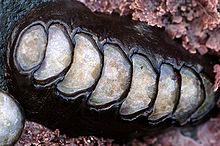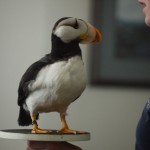Tuesday, August 28, 2012 : Third Day
We’re diving right in to databases and discovery. We start the day with the an unusual look at databases from Barb Butler & Janet Webster. These  collaborators entertain and enlighten with every presentation. Seems the “We’ve Always Done It This Way” crowd was a little contentious about having some of our traditional resources examined from different perspectives. Mostly because the resources don’t seem to add up from behind. “Pay no attention to that man behind the curtain.” More examination is necessary as we examine our practices to make sure they really are what is best for the patron, not what is most comfortable for us.
collaborators entertain and enlighten with every presentation. Seems the “We’ve Always Done It This Way” crowd was a little contentious about having some of our traditional resources examined from different perspectives. Mostly because the resources don’t seem to add up from behind. “Pay no attention to that man behind the curtain.” More examination is necessary as we examine our practices to make sure they really are what is best for the patron, not what is most comfortable for us.
On the wild frontier of discovery, we learned about new discovery tools and how we are using them to help patrons find materials and resources without having the think too much. The Google Search Box model is taking over the world.
Short break and we learn”How Chitons Explain the World”.  These interesting critters go by many names. In Bermuda, they are called suckrocks. (That’s kind of an insult in my family where we tell each other to ‘Go suck a rock’ when we’re angry with each other.)  In Alaska, the Katharina tunicata is called bidarki. The Native Alaskans eat quite a few of these, though the meal is called a ‘shut up dinner’.  Lot
These interesting critters go by many names. In Bermuda, they are called suckrocks. (That’s kind of an insult in my family where we tell each other to ‘Go suck a rock’ when we’re angry with each other.)  In Alaska, the Katharina tunicata is called bidarki. The Native Alaskans eat quite a few of these, though the meal is called a ‘shut up dinner’.  Lot s of details about the many circumstances that have led to the critters becoming a primary food source rather than the other seafood choices of the area. “Effective conservation methods requires understanding of past and causal conditions.”
s of details about the many circumstances that have led to the critters becoming a primary food source rather than the other seafood choices of the area. “Effective conservation methods requires understanding of past and causal conditions.”
After this wonderful talk, we snagged our box lunches and boarded the buses for the Alaska Sea Life Center in Seward, Alaska. Driving along Turnagain Arm, we were lucky enough to spot beluga whales in the water. Sorry, no pictures as they surface and dive too quickly for my shutter. I do need to experiment more with my camera.
We arrived in Seward just a bit late, but still got to do everything on the schedule for the center. PUFFINS!!! Yes, our first talk was the Puffin Experience. We were introduced to Alcid biology and other interesting facts as well as Nemo the horned puffin, a rhinoceros auklet and Dot, the tufted puffin. 


We went behind the scenes to visit the labs and tanks behind the walls the public sees. A self-guided tour allowed us time to see all the exhibits and visit the gift shop. A sumptuous dinner was served on the first floor among the underwater exhibits where several of us tried to capture pictures of the young, energetic harbor seal. The little devil enjoyed teasing all the silly humans trying to get his picture. And we loaded the bus for the 2.5 hour journey home, which turned out to be a bit longer due to road construction going on after dark. A very late night, but well worth the visit and the drive as we got to see a lot of gorgeous scenery.
Lenora
StreamNet Regional Librarian
Columbia River Inter-Tribal Fish Commission
http://www.streamnetlibrary.org




